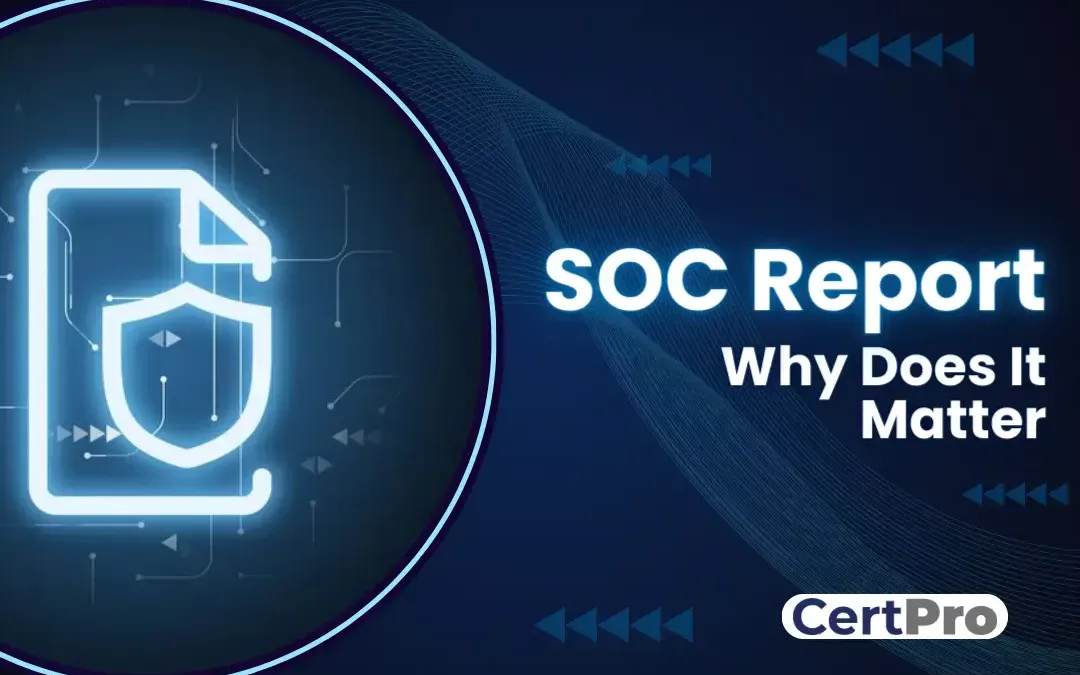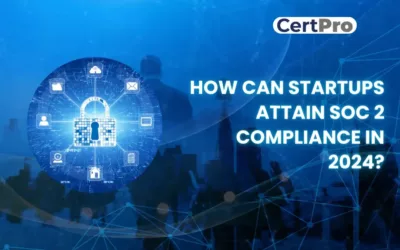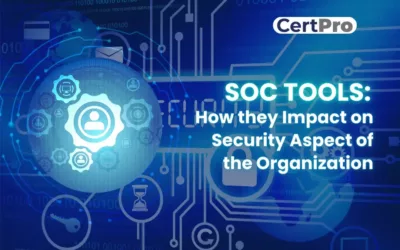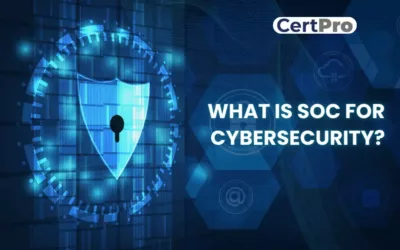Protecting sensitive information is essential in today’s data-centric environment. System and Organization Controls (SOC) reports have emerged as crucial tools for organizations, assuring clients, partners, and stakeholders of their commitment to data security and operational integrity. Certified professionals like CPAs or CISAs create SOC report to assess an organization’s control effectiveness in security, availability, processing integrity, confidentiality, and data privacy.
It exists in three main types: SOC 1, SOC 2, and SOC 3, each tailored for specific purposes. SOC 1 focuses on financial reporting controls, while SOC 2 examines security, availability, processing integrity, confidentiality, and privacy. SOC 3, a condensed SOC 2 version for public consumption, underscores trust and transparency.
These reports matter significantly. They enhance trust, showcase regulatory compliance, aid in vendor risk management, and confer a competitive advantage. Beyond these benefits, the service organization control report empowers organizations to continually refine controls and navigate evolving threats in today’s dynamic business landscape. This article delves deeper into SOC report types, the audit process, and their multifaceted significance in the modern business world.
WHAT IS A SOC REPORT?
A System Organization Controls Report is a comprehensive document that serves as a critical tool for organizations to assess, communicate, and ensure the effectiveness of their internal controls and cybersecurity measures. These reports are the result of rigorous independent audits conducted by certified professionals, typically Certified Public Accountants (CPAs) or Certified Information Systems Auditors (CISAs).
There are different types of Service organization control reports, each tailored to specific objectives Service organizations, such as financial institutions and data processors, often use System Organization Control 1 reports, which primarily concern controls over financial reporting and impact their clients’ financial statements.
In contrast, System Organization Control 2 reports focus on controls related to security, availability, processing integrity, confidentiality, and privacy of data. The significance of Service organization control reports in the modern business landscape cannot be overstated. They serve as a powerful assurance mechanism, building trust and transparency between service organizations and their clients. By undergoing an audit and sharing the resulting In this report, organizations demonstrate their commitment to accountability and data security. Service organization control reports also play a vital role in regulatory compliance, helping organizations meet the stringent requirements of various industry-specific regulations, such as HIPAA in healthcare.
Furthermore, Service organization control reports facilitate effective vendor risk management, allowing organizations to assess the security posture of their service providers. In an era where data breaches and cyber threats are ever-present, Service organization control reports are a competitive advantage, providing organizations with a tangible way to showcase their commitment to security and compliance. In summary, Service organization control reports are pivotal documents in the ongoing efforts to protect sensitive data, ensure operational integrity, and navigate the complex landscape of cybersecurity and regulatory compliance.
TYPES OF SOC REPORT
System and Organization Controls (SOC) reports are a vital component of modern business operations, providing valuable insights into an organization’s control environment and its commitment to data security, integrity, and compliance.
There are three SOC report types:
1. SOC 1 Report:
Focus: It is also known as the SOC 1 report and is primarily concerned with controls over financial reporting.
Applicability: Service organizations that impact their clients’ financial statements often seek.
Audit Criteria: SOC 1 audits adhere to SSAE No. 18 guidelines. It includes Type I, assessing control design at a specific time, and Type II, evaluating control effectiveness over six to twelve months.
2. SOC 2 Report:
Focus: It delves into controls related to security, availability, processing integrity, confidentiality, and privacy of data.
Applicability: Organizations entrusted with sensitive customer data, such as cloud service providers, data centers, and Software as a Service (SaaS) providers.
Audit Criteria: SOC 2 report audits follow the Trust Services Criteria developed by the American Institute of Certified Public Accountants (AICPA). Similar to SOC 1, there are Type I and Type II reports for SOC 2, providing assessments of control design and effectiveness.
3. SOC 3 Report:
Focus: SOC 3 reports, also known as Trust Services Reports, are condensed versions of Service Organization Control 2 reports designed for public consumption.
Applicability: Organizations often use SOC 3 reports for marketing and promotional purposes, showcasing their commitment to data security and compliance to a broader audience, including clients, partners, and stakeholders.
Audit Criteria: SOC 3 audits are based on the same Trust Services Criteria as SOC 2, ensuring alignment in assessing controls.
In summary, these are essential tools for organizations aiming to enhance trust, ensure regulatory compliance, manage vendor risks, and gain a competitive edge in the modern business landscape.
WHY DO SOC REPORTS MATTER?
SOC (System and Organization Controls) reports matter significantly in today’s business landscape due to their pivotal role in ensuring data security, transparency, and operational integrity. These reports are essential tools for organizations seeking to build trust with clients, partners, and stakeholders while navigating a complex landscape of regulatory compliance and cybersecurity threats.
1. Enhancing Trust and Transparency: These are tangible demonstrations of an organization’s commitment to transparency and accountability. By undergoing independent audits and sharing the resulting reports, organizations showcase their dedication to safeguarding sensitive information and maintaining high standards of control.
2. Demonstrating Regulatory Compliance: Many industries and jurisdictions have stringent regulations governing data security and privacy. It provides a structured framework for organizations to demonstrate compliance with these regulations.
3. Vendor Risk Management: As organizations increasingly rely on third-party service providers, assessing the security posture of these vendors becomes crucial. It allows businesses to evaluate the risks associated with their service providers and ensure that these providers meet the necessary security standards.
4. Competitive Advantage: Organizations that possess the Service organization control reports gain a competitive edge in the market. Clients are more likely to trust and choose a service provider that can demonstrate its commitment to security and data protection through an independent audit.
5. Incident Response and Improvement: It not only identifies the strengths of an organization’s controls but also highlights areas that require improvement.
6. Navigating Complex Regulatory Landscapes: Different industries and jurisdictions have varying regulatory requirements related to data security and privacy. It helps organizations navigate these complex landscapes by providing a standardized framework for assessing controls.
In conclusion, It plays a crucial role in assessing and communicating an organization’s control environment, helping clients make informed decisions about data security.
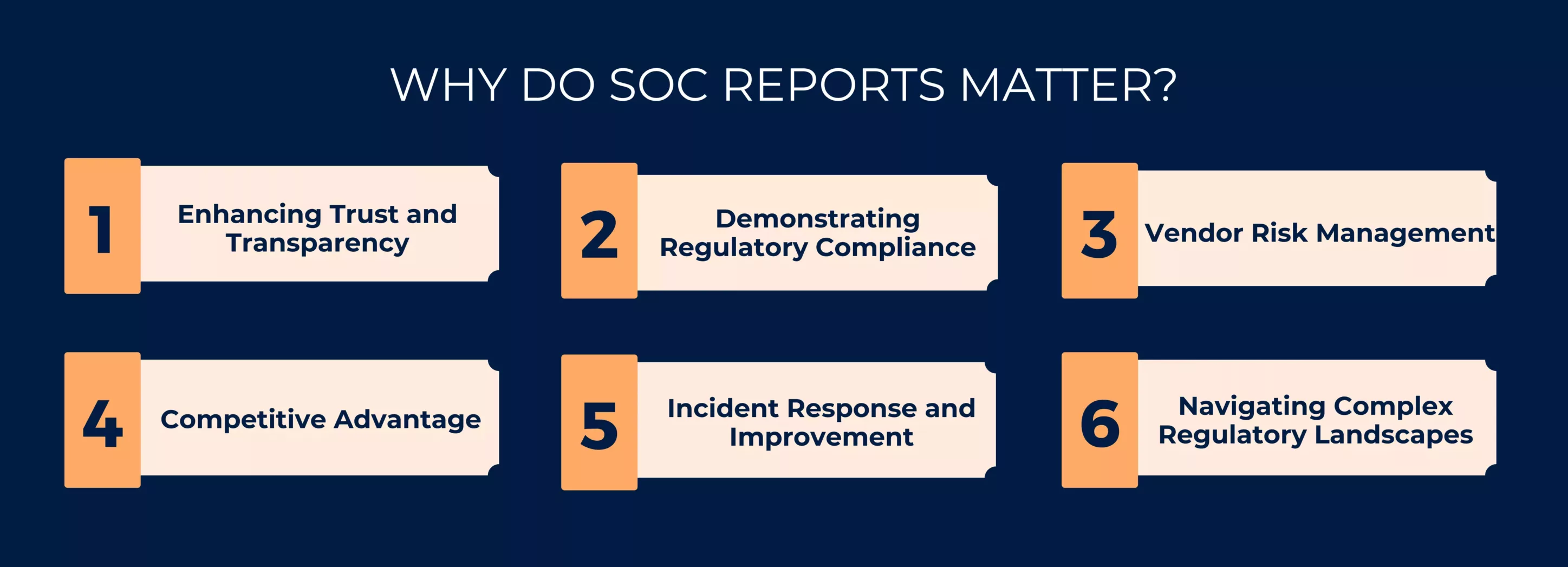
DIFFERENCE BETWEEN TYPE 1 AND TYPE 2 SOC REPORT
System and Organization Controls (SOC) reports play a pivotal role in evaluating and providing assurance about an organization’s controls, particularly in the context of service organizations.
SOC 1 type 1 report: The SOC 1 Type 1 report is a crucial document that focuses on two primary elements: first, the examination of the system within the service organization; and second, an assessment of the appropriateness of the design of system controls in achieving the corresponding control objectives, both as of a specific date.
SOC 1 type 2 report: We encounter an expansion of the SOC 1 Type 2 report. While it encompasses the same elements as Type 1, it adds a crucial component: an opinion on the operating effectiveness of the controls to achieve the related control objectives throughout a specified period.
SOC 2 type 1 report: It encompasses management’s description of a service organization’s system, which includes elements like service commitments, system requirements, and the suitability of control design. Essentially, it provides a snapshot of the service organization’s systems andcontrols.l environment, offering user entities valuable insights into how the organization manages its system-related commitments and requirements.
SOC 2 type 2 report: SOC 2 type 2 report upon the Type 1 report It includes the same system description but goes further by assessing the operating effectiveness of controls and providing a detailed account of the service auditor’s tests of controls and their results.
In summary, the SOC 2 type 1 vs. type 2 reports are crucial tools for evaluating controls at service organizations. Type 1 reports focus on control design and system descriptions, while Type 2 reports add the dimension of control operating effectiveness over a specified period.
WHY DO YOU NEED A SOC REPORT?
SOC reports apply to organizations that provide software or services, including those in the financial services, payroll, healthcare, and data center industries. They also cover third-party service providers like cloud storage, web hosting, and businesses using the software-as-a-service (SaaS) model. Through storage, processing, or direct influence, these businesses are essential to the management of the sensitive or financial data of their clientele or user entities.
The importance of SOC reports arises from their capacity to give clients information about a vendor’s security protocols as well as the veracity of their systems and data. In addition, by proactively identifying vulnerabilities and addressing flaws, these reports enable providers to reduce the likelihood that customers may find problems.
Getting a SOC 2 report is frequently necessary for many major businesses before working with a service provider. It might be difficult to choose the best kind of SOC report for a given set of business requirements, though.
WHO PREPARES A SOC REPORT?
To perform the audit for SOC reports, you need a Certified Public Accountant (CPA) from an auditing firm accredited by the AICPA. The auditing procedure requires the participation of an outsider who is not affiliated with your company. When you hire an auditor, their job is to look into your operations in great detail and then produce a report with their conclusions in it. This report is an essential evaluation of your company’s compliance with SOC compliance guidelines. The audit’s externality guarantees the evaluation process’s impartiality and legitimacy. AICPA-accredited auditing firms and respectable CPAs are necessary to ensure the dependability and accuracy of the SOC report.
FAQ
WHY DO SERVICE ORGANIZATION CONTROL REPORTS MATTER?
These are crucial for enhancing trust, demonstrating regulatory compliance, managing vendor risks, gaining a competitive edge, and improving security and operational controls in today’s data-centric business landscape.
WHAT’S THE DIFFERENCE BETWEEN TYPE 1 AND TYPE 2 SERVICE ORGANIZATION CONTROL 2 REPORTS?
Type 1 Service organization control reports focus on control design and system descriptions, while Type 2 reports assess control operating effectiveness over a specified period, providing a more in-depth evaluation of controls at service organizations.
HOW DO SERVICE ORGANIZATION CONTROL REPORTS BENEFIT THE ORGANIZATION AND THEIR CLIENTS?
It benefits organizations by demonstrating their commitment to data security, aiding regulatory compliance, managing vendor risks, and providing a competitive advantage. For clients, they offer assurance of a service provider’s control effectiveness and data protection measures.
WHAT ARE THE MAIN TYPES OF SERVICE ORGANIZATION CONTROL REPORTS?
There are three main types: Service organization control 1 (financial controls), Service organization control 2 (security, availability, integrity, confidentiality, and privacy), and Service organization control 3 (a public version of Service organization control 2).
WHAT IS A SERVICE ORGANIZATION CONTROL REPORT?
These are documents assessing an organization’s controls, including Service organization controls 1, 2, and 3. They matter for trust, compliance, vendor risk, and competitiveness in data security.

About the Author
GANESH S
Ganesh S, an expert in writing content on compliance, auditing, and cybersecurity, holds a Bachelor of Arts (BA) in Journalism and Mass Communication. With a keen eye for detail and a knack for clear communication, Ganesh excels in producing informative and engaging content in the fields of compliance, auditing, and cybersecurity, with particular expertise in ISO 27001, GDPR, SOC 2, HIPAA, and CE Mark.
HOW CAN STARTUPS ATTAIN SOC 2 COMPLIANCE IN 2024?
Trust is crucial for startups to do well in today's digital world. It's vital for establishing credibility with clients, especially in a data-driven environment where privacy is the main component. Therefore, getting a SOC 2 compliance report is crucial to building...
SOC TOOLS: How They Impact On Security Aspect Of The Organization
The changing cybersecurity landscape increases the importance of Security Operations Center (SOC) tools. Hence, it is essential for strengthening digital defenses and protecting against cyberattacks. SOC tools help security teams detect, monitor, and prevent security...
WHAT IS SOC FOR CYBERSECURITY?
In today's fast-paced digital landscape, ensuring robust cybersecurity measures is imperative for organizations aiming to protect sensitive data and maintain stakeholder trust. The American Institute of CPAs (AICPA) crafted the SOC for cybersecurity reporting...

